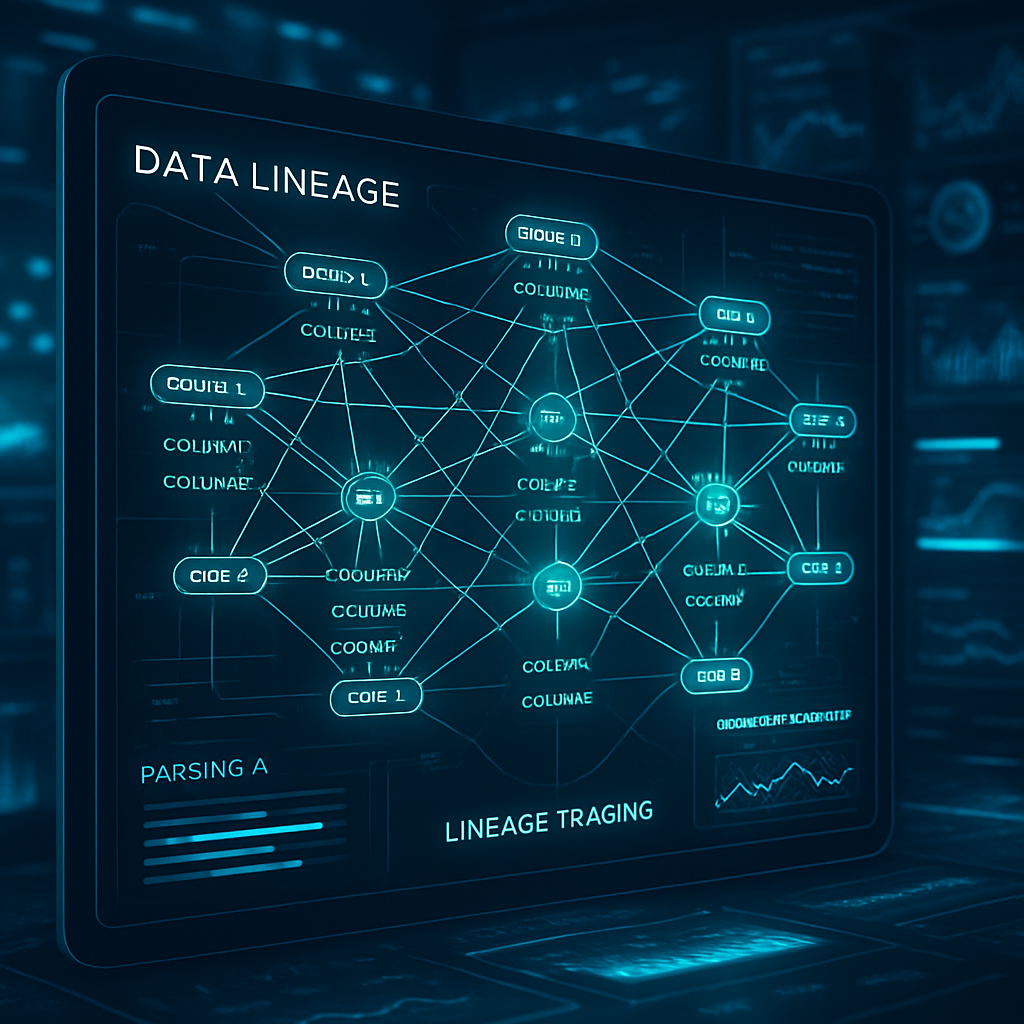Five Reasons why you need an AI Gateway
An AI gateway simplifies how businesses use and manage AI systems, ensuring security, compliance, and scalability. Here's why it's essential:
- Centralized AI Management: Streamline operations by managing all AI models through one interface, reducing complexity and improving efficiency.
- Enhanced Security: Protect sensitive data with advanced controls like encryption, role-based access, and real-time threat monitoring.
- Automated Compliance: Meet regulations like GDPR and HIPAA effortlessly with built-in compliance tools.
- Scalable AI Operations: Handle growing demands with features like load balancing, caching, and automated resource management.
- Actionable Analytics: Gain insights into AI performance, costs, and usage to make smarter decisions.
The AI Gateway Pattern: Adopt AI and Multi-LLM Strategies in a Secure and Governable Way
1. Centralize AI Model Management
Managing AI models across multiple platforms can quickly become a logistical nightmare. That’s where an AI gateway steps in, serving as the central hub for your organization’s AI operations. This streamlined approach eliminates the hassle of juggling disparate AI services while improving both performance and security.
Marco Palladino, CTO at Kong, aptly highlights the risks of not centralizing AI management: "Without an AI gateway, we risk introducing complexity, fragmentation, security blindspots, shadow IT, and overall lower efficiency and higher costs". His words underline why centralization is essential for enterprises leveraging AI.
Why Centralization Matters
Improved Performance and Reliability
With an AI gateway, you can achieve significant performance gains. For example, response times from the OpenAI GPT API can be up to 15x faster thanks to intelligent request routing and load balancing. When using services like Azure OpenAI, the gateway distributes requests across multiple regions, ensuring smooth operations and uninterrupted service even during peak demand.
Streamlined Access Management
Centralization also simplifies access control. By unifying all AI services under one interface, organizations can:
- Manage access through a single authentication point
- Handle security credentials more efficiently
- Monitor AI usage with a comprehensive overview
- Identify opportunities for cost savings based on consolidated usage data
Optimized Resource Allocation
Centralized management enables better resource utilization with features designed for efficiency:
| Feature | Benefit |
|---|---|
| Intelligent Failover | Maintains operations by redistributing loads automatically |
| Usage Quotas | Keeps costs in check with predefined limits |
| Resource Monitoring | Provides real-time insights into resource usage |
For enterprises relying on platforms like Amazon Bedrock, Amazon SageMaker JumpStart, or third-party providers such as Anthropic, an AI gateway acts as the central source of truth. It consolidates model availability and access methods, forming the backbone of enterprise AI strategies.
The Growing Importance of AI Gateways
Consider this: over 83% of all Internet traffic today is API traffic. By implementing an AI gateway as a core component of their infrastructure, organizations can ensure consistent governance and maintain the agility needed to thrive in the ever-evolving AI landscape. This approach not only simplifies operations but also positions businesses to adapt and scale effectively.
2. Protect Data with Advanced Security Controls
Once AI model management is centralized, the next critical step is ensuring robust security measures are in place. Safeguarding sensitive data during AI operations is a top priority.
Zero-Trust Security Framework
AI gateways implement a zero-trust model, which requires verification for every request. This approach scrutinizes both inbound and outbound data to maintain a secure environment for AI processes.
"The Kiteworks AI Data Gateway provides a secure bridge between AI systems and enterprise data repositories, ensuring that only authorized entities can access sensitive information".
Key Security Controls
The following security controls play a vital role in protecting data:
| Security Control | Function | Benefit |
|---|---|---|
| Prompt Injection Defense | Blocks malicious inbound attacks | Prevents unauthorized data access |
| Automatic Data Redaction | Masks sensitive information | Safeguards PII and enterprise assets |
| Role-Based Access | Manages user permissions | Ensures proper data handling |
| Encryption | Secures data at rest and in transit | Preserves data integrity |
These measures create a secure foundation for managing threats and maintaining compliance with data protection standards.
Real-Time Threat Prevention
The gateway actively monitors for vulnerabilities, including those identified in the OWASP LLM Top 10. By detecting and addressing threats in real-time, it strengthens the security of AI operations across the organization.
"By securely enabling our employees with the right permissions to access and leverage data, we're not only driving productivity and innovation but also ensuring that our employees are equipped with leading competencies".
Strengthened Data Governance
The AI gateway also enhances data governance by introducing several key capabilities:
- Continuous Monitoring: Provides real-time tracking and reporting of data usage across all AI interactions.
- Compliance Automation: Ensures adherence to regulations such as GDPR and HIPAA through automated enforcement of requirements.
- Secure RAG Implementation: Facilitates Retrieval-Augmented Generation while mitigating security risks.
3. Meet Regulatory Requirements Automatically
AI gateways are stepping up to simplify compliance in a world where regulations for AI systems are growing more complex. By 2025, organizations will need to navigate over 38 compliance requirements. Leveraging centralized management and strong security controls, these gateways ensure that AI operations remain secure and compliant without constant manual intervention.
Automated Compliance Controls
AI gateways enforce governance policies for every interaction between AI systems and enterprise data. This automation ensures that compliance standards are continuously met:
| Compliance Feature | Function | Regulatory Impact |
|---|---|---|
| Real-time Monitoring | Tracks all AI interactions and data access | Maintains audit trails for GDPR and HIPAA |
| Automated Data Protection | Encrypts data at rest and in transit | Addresses data security requirements |
| Intelligent Risk Assessment | Identifies and mitigates compliance risks | Reduces chances of regulatory violations |
| OpenTelemetry Integration | Exports compliance data to SIEM/SOAR systems | Enhances comprehensive reporting |
Proactive Compliance
With built-in automation, AI gateways help organizations tackle regulatory challenges head-on. Here’s how they make compliance more manageable:
- Real-time Regulatory Tracking: A centralized dashboard monitors the compliance status of AI applications, automatically addressing potential violations as they arise. This real-time approach minimizes risks and keeps operations running smoothly.
- Tailored Compliance Frameworks: Whether it's GDPR, CCPA, or HIPAA, the gateway applies specific controls and restrictions to meet the unique demands of each regulation.
By automating these processes, businesses can stay ahead of evolving regulatory landscapes.
Advanced Compliance Features
AI gateways also offer advanced tools for maintaining visibility and control over compliance efforts. These features include:
- Monitoring data exchanges to ensure secure and compliant interactions
- Keeping detailed audit logs for regulatory reporting
- Detecting and addressing risks before they escalate
These capabilities provide organizations with the tools they need to ensure compliance while reducing the burden of manual oversight.
sbb-itb-becd87d
4. Support Enterprise-Scale AI Operations
Scaling AI operations across large organizations requires a solid infrastructure capable of handling growing demands. AI gateways serve as the backbone, enabling enterprises to expand their AI capabilities efficiently.
Dynamic Resource Management
AI gateways are designed to manage resources dynamically, ensuring smooth scaling and optimal performance. By leveraging real-time tools like load balancing and caching, these systems allocate resources where they’re needed most. The gateway’s architecture supports a range of routing capabilities that enhance operational efficiency:
| Routing Type | Function | Business Impact |
|---|---|---|
| Latency-based | Routes requests to lower-latency models | Keeps response times consistent under load |
| Intent-based | Directs prompts to the most appropriate models | Maximizes resource efficiency |
| Semantic Caching | Stores frequently used prompt results | Lowers operational costs |
Proven Performance Gains
The benefits of AI gateways are already evident in real-world applications. For instance, a global manufacturing company reported the following achievements:
- 50% reduction in deployment times
- 20% decrease in operational costs
- Enhanced operational efficiency and security
- Real-time performance monitoring capabilities
These results highlight how AI gateways can significantly improve scalability and cost-effectiveness.
Advanced Scaling Capabilities
AI gateways not only simplify resource management but also introduce advanced scaling features to keep operations agile and efficient. These capabilities include:
- Distributed Computing: By utilizing cloud infrastructure and distributed systems, gateways effectively manage increasing workloads without compromising performance.
- Automated Lifecycle Management: These platforms streamline the entire lifecycle of AI models. Features like version control, automated retraining, and rollback mechanisms ensure stability and minimize risks during scaling.
- Cross-functional Collaboration: AI gateways break down silos by providing a unified interface. Teams can share access to models, datasets, and insights, fostering seamless collaboration across the organization.
5. Deliver Clear Analytics for Better Decisions
Making the right decisions requires a clear understanding of how AI operates. AI gateways simplify complex data, turning it into actionable insights that leadership teams can use effectively. Building on centralized management and robust security measures, these gateways provide a thorough operational overview.
Real-time Performance Monitoring
AI gateways are equipped with tools that monitor operations in real time, offering detailed logs and performance metrics tailored for AI systems. These insights help leadership teams make informed decisions by focusing on key areas like:
| Metric Type | What It Measures | Business Value |
|---|---|---|
| Cost Analytics | Per-model usage and expenses | Helps optimize how AI investments are allocated |
| Performance Metrics | Response times and throughput | Identifies bottlenecks and areas needing improvement |
| Usage Patterns | Model utilization and demand | Guides capacity planning and resource allocation |
Data-Driven Success Story
The value of clear analytics goes beyond just technical monitoring - it drives real-world results. A great example is Quizizz, an edtech platform that serves over 90% of schools in the United States. By implementing an AI gateway for their teacher-focused AI services, Quizizz achieved 100% operational visibility, maintained an impressive 99.99% uptime for AI-powered features, and accelerated the testing and integration of new AI models.
Enhanced Decision Support
AI gateways provide a centralized view of operations through detailed logs and real-time expense tracking. They also ensure quality with features like content filtering and output validation. These data points allow for continuous performance reviews, helping organizations maintain high service standards while making informed decisions.
Conclusion
An AI gateway brings together centralized management, enhanced data security, automated compliance, scalable operations, and insightful analytics. These features make it a critical tool for organizations aiming to fully leverage AI while maintaining efficiency and responsibility in their deployments.
Strategic Implementation Steps
To successfully implement an AI gateway, consider these key phases:
| Implementation Phase | Key Actions | Expected Outcomes |
|---|---|---|
| Assessment | Evaluate AI use across departments and identify key stakeholders | A clear understanding of organizational needs |
| Model Strategy | Select appropriate models (small, medium, or large) based on specific use cases | Optimized resource allocation |
| Security Setup | Configure authentication, apply rate limits, and enable data masking | Strengthened protection of AI assets |
| Monitoring | Define metrics and analyze usage patterns | Improved visibility into operational performance |
These steps provide a structured approach to building a solid, future-ready AI framework.
Building for Long-term Success
Investing in an AI gateway is a forward-thinking move that ensures scalability and security. To maximize its potential, organizations should focus on three critical areas:
-
Establish Dedicated Oversight
Form an AI Gateway Operations team to oversee management and compliance. Define clear policies for data handling, prompt engineering, and auditing. Regularly reinforce security measures through ongoing oversight. -
Ensure Technical Resilience
Use multi-region deployments to build redundancy and adopt hybrid cloud strategies to avoid single points of failure. This ensures uninterrupted service while meeting compliance standards. -
Maintain Flexibility
Opt for solutions that support open standards and multi-cloud compatibility to avoid vendor lock-in. This approach allows for seamless adaptation to evolving AI technologies while enabling scalable operations without compromising security.
FAQs
How can an AI gateway enhance the security of my company's AI systems?
AI gateways play a crucial role in bolstering the security of your company's AI systems. They incorporate measures such as encryption, granular access controls, and data masking to protect sensitive information and block unauthorized access.
Beyond security, these gateways also help ensure compliance with important regulatory frameworks, streamlining the process of meeting legal and industry requirements. By centralizing AI operations and securing them, AI gateways create a dependable platform that allows your business to expand its AI efforts while maintaining data privacy and integrity.
How does an AI gateway help ensure compliance with regulations like GDPR and HIPAA?
An AI gateway plays a critical role in helping organizations maintain compliance by enforcing rigorous data management policies. It safeguards sensitive information through secure handling, keeps comprehensive audit logs, and blocks any unauthorized access or misuse.
By simplifying adherence to regulations like GDPR and HIPAA, an AI gateway minimizes the chances of data breaches and hefty regulatory fines. This allows businesses to manage enterprise data with greater confidence and security.
How can an AI gateway help my organization scale AI operations effectively?
An AI gateway is a powerful tool that allows organizations to expand their AI operations more efficiently by simplifying the deployment and management of AI models. Acting as a central hub, it streamlines infrastructure oversight, making it easier to connect and coordinate various AI tools and systems without unnecessary complexity.
Some of its standout features include semantic caching, which accelerates response times, load balancing to maintain steady performance levels, and comprehensive access controls to ensure security and compliance. Together, these capabilities not only boost operational efficiency but also help control expenses while paving the way for scalable growth in your AI projects.

 By
By


